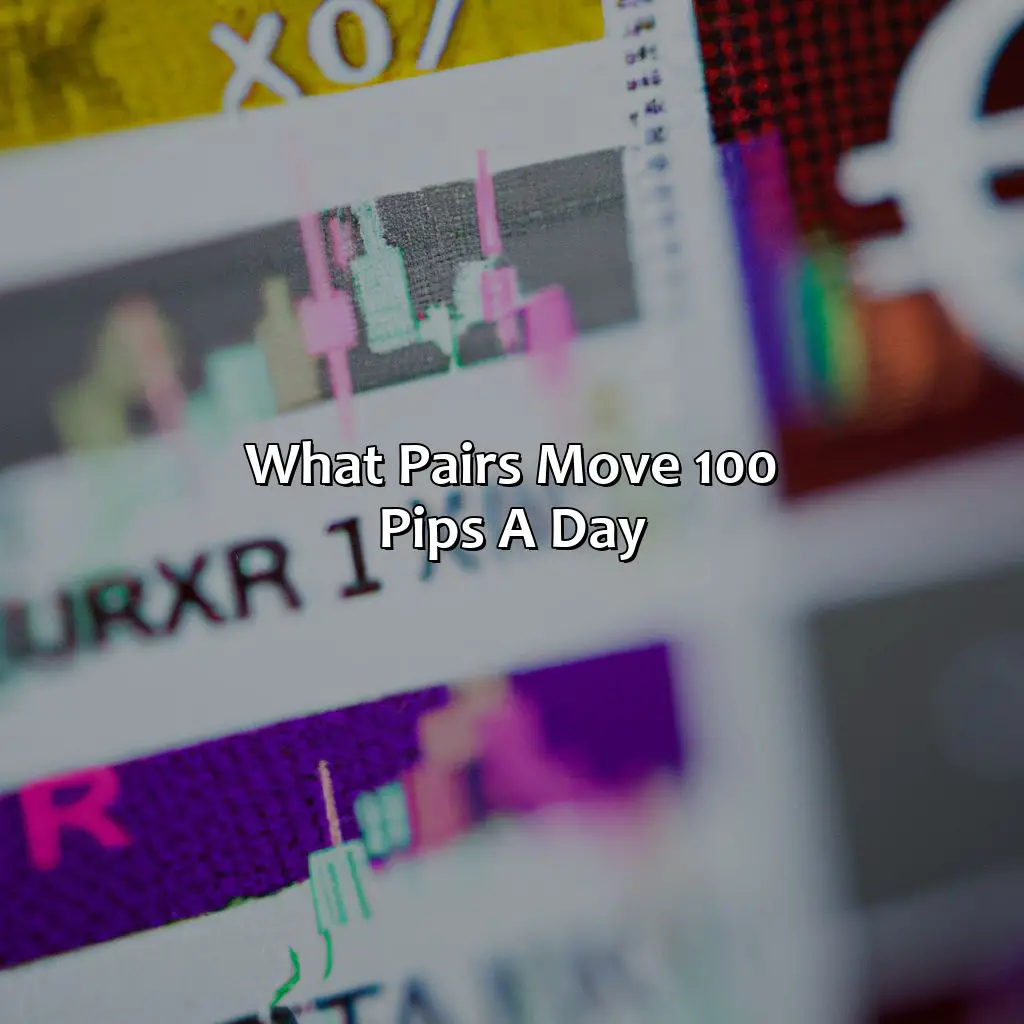
Key Takeaways:
- Major currency pairs like EUR/USD, GBP/USD, USD/JPY, and USD/CHF have high trading volumes and daily moves of 100 pips or more, making them ideal for high volatility trading strategies based on technical or fundamental analysis.
- Cross currency pairs like EUR/JPY, GBP/JPY, AUD/JPY, and CAD/JPY also have high volatility, with daily moves of 100 pips or more, offering opportunities for high risk/high reward trades based on technical or fundamental analysis.
- Economic indicators, geopolitical events, and central bank policies are key factors affecting currency pair movements, and traders must stay informed and adjust their strategies accordingly to manage risks and take advantage of potential opportunities.
- To trade high volatility currency pairs, it is important to use risk management strategies like stop-loss orders, position sizing, and diversification, and to develop emotional control and discipline to avoid the pitfalls of overtrading and emotional decision-making.
Major Currency Pairs
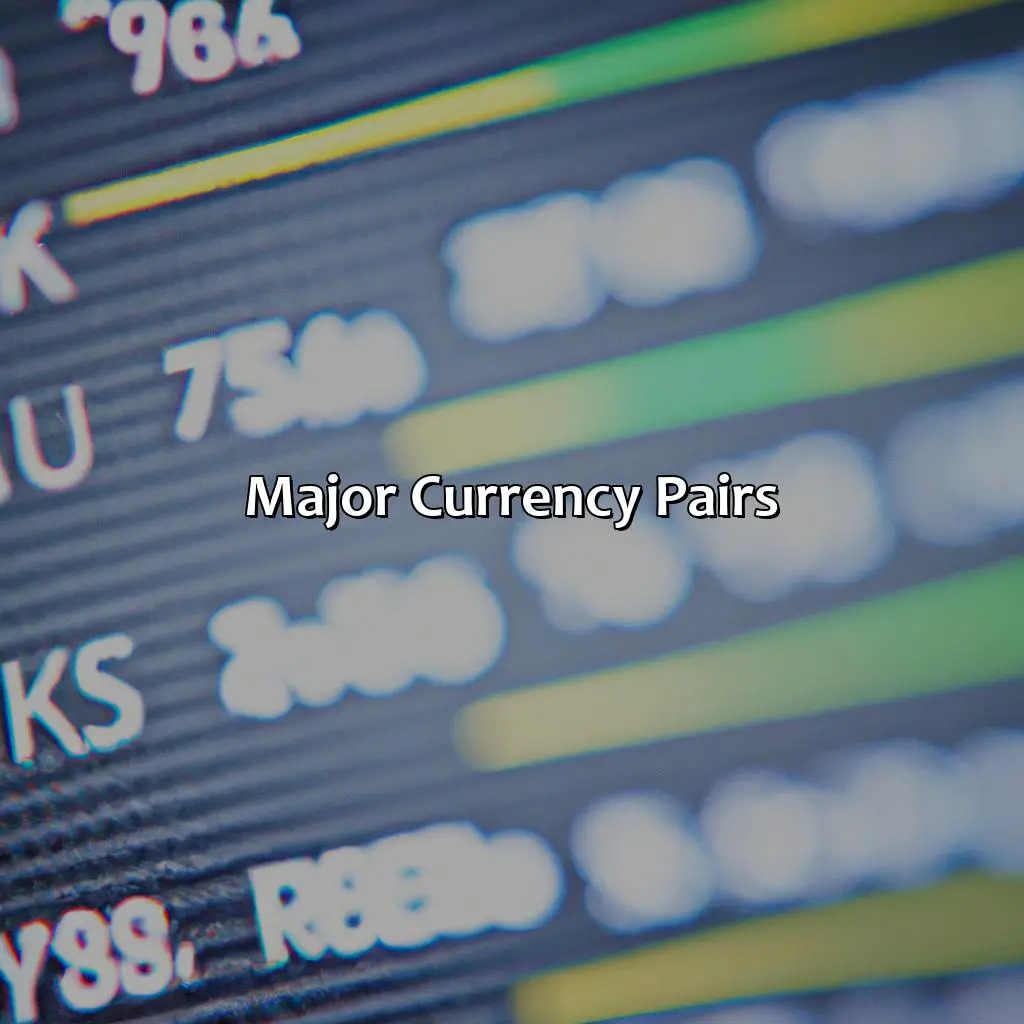
Photo Credits: forexbrokerreport.com by Tyler Miller
Wanna know which currency pairs move 100 pips a day? Look at the major currency pairs in forex trading. These are the most active and liquid pairs. To track daily moves of EUR/USD, GBP/USD, USD/JPY, and USD/CHF, use technical and fundamental analysis. These pairs usually show high volatility. Apply effective trading strategies, risk management, and trading psychology for profitable trades in these major currency pairs.
EUR/USD
The EUR/USD currency pair is one of the most heavily traded pairs in the world due to its high liquidity and long trading hours. With daily moves of 100 pips or more, it presents significant opportunities for traders to profit from its high volatility.
| High | Low | Close |
| 1.1065 | 1.0999 | 1.1034 |
| 1.1120 | 1.1002 | 1.1106 |
| 1.1113 | 1.0938 | 1.1038 |
With a stronghold in Europe and the United States, market players closely monitor this pair for any sudden moves that can indicate potential economic shifts in their respective regions.
Pro Tip: Consider implementing multiple risk management strategies when trading high volatility pairs like EUR/USD to mitigate losses during unexpected market movements.
Looking to add some excitement and risk to your trading strategy? Consider GBP/USD – with its high daily moves and volatility, it’s sure to keep you on your toes when it comes to risk management and trading psychology.
GBP/USD
| Date | Open | High | Low | Close |
|---|---|---|---|---|
| May 3, 2021 | 1.3866 | 1.3974 | 1.3838 | 1.3919 |
| May 4, 2021 | 1.3917 | 1.3955 | 1.3902 | 1.3916 |
| Last Date | .. | .. | .. | .. |
GBP/USD has several unique features that make it a popular pair for traders, such as its sensitivity to monetary policy announcements from both countries, global geopolitical events, and economic indicators like inflation or employment data.
To manage risk effectively when trading GBP/USD, traders must adopt appropriate strategies based on their preferences and risk appetite. Day trading and swing trading are popular among short-term traders because they allow them to capitalize on intraday price movements without overextending their positions.
Managing emotions is critical while engaging in volatile markets like GBP/USD since market uncertainty frequently elicits impulsive decision-making that could trigger significant losses if left unchecked.
Why settle for a rollercoaster ride when you can trade USD/JPY for daily thrills and spills?
USD/JPY
The pair known as the “Ninja” is sought after by traders due to its high volatility. In terms of daily moves, USD/JPY is one of the most active currency pairs known to move up to 100 pips daily.
| Pair | Current Price | 24-hour Change |
| USD/JPY | 109.30 | -0.60% |
Trading strategies that use breakouts, trend following and other momentum-based approaches can be effective with high volatile pairs like USD/JPY. Risk management and trading psychology are also crucial in dealing with the potential drawdowns in this pair.
Don’t miss out on the opportunity to capitalize on this high-volatile pair’s movements and incorporate it into your trading strategy today! Want to ride the high volatility wave of USD/CHF’s daily moves? Remember to have a solid trading strategy and emotional control to manage the risks.
USD/CHF
The currency pair USD/CHF is highly volatile and experiences daily moves of up to 100 pips. According to recent market trends, the value of the Swiss franc is typically influenced by Switzerland’s central bank policies and economic indicators like retail sales and consumer prices. Conversely, US dollar movements are affected by a broader range of factors, which include fundamental and geopolitical considerations.
Here is a table that showcases the daily high-low ranges for USD/CHF over the past five years:
| Year | Daily High (USD/CHF) | Daily Low (USD/CHF) |
|---|---|---|
| 2021 | 1.0298 | 0.8827 |
| 2020 | 1.0239 | 0.9430 |
| 2019 | 1.0238 | 0.9659 |
| 2018 | 1.0050 | 0.9187 |
| 2017 | 1.0343 | 0.9421 |
Furthermore, traders must note that fluctuations in USD/CHF exchange rates can impact their trade outcomes negatively but they can also provide opportunities for lucrative trades. Implementing effective trading strategies such as day trading, breakout trading and swing trading can help improve profit margins while ensuring risk management techniques like stop loss orders are in place.
To achieve success when trading pairs with high volatility like USD/CHF, it’s essential to maintain emotional control and avoid rash decisions motivated by greed or FOMO. Maintain discipline while observing market trends to ensure consistency in your decision-making process helps establish a robust trading psychology for successful outcomes.
Couples that move together, groove together: Get to know the cross-currency pairs that make daily moves of 100 pips with high volatility and learn the best trading strategies to tackle them using technical and fundamental analysis.
Cross Currency Pairs
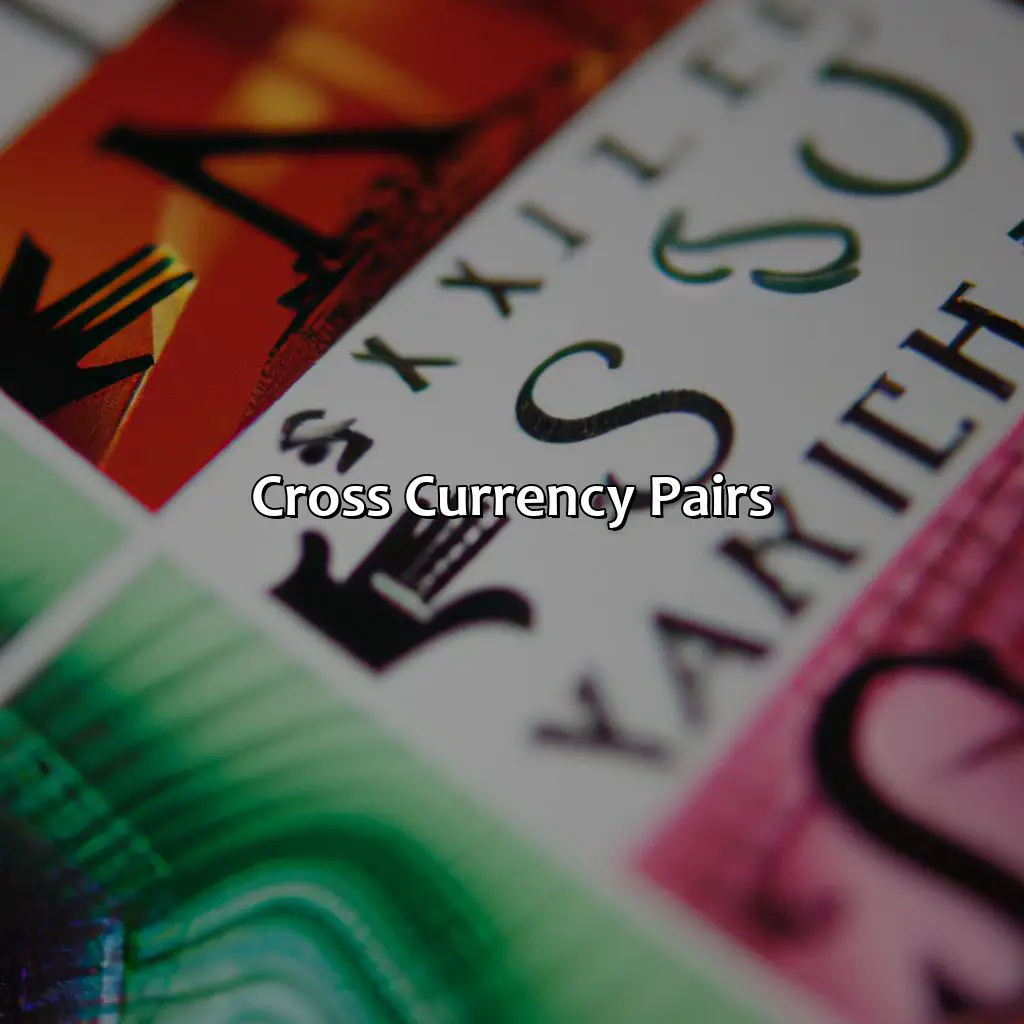
Photo Credits: forexbrokerreport.com by Joseph Williams
Curious to see which cross currency pairs move 100 pips each day? Look no further. Check out the EUR/JPY, GBP/JPY, AUD/JPY, and CAD/JPY sections. These pairs are volatile and great for traders who use technical, fundamental and psychology-driven strategies. Learn more about their daily moves, risk management and trading strategies.
EUR/JPY
EUR/JPY, also known as the euro-yen currency pair, is among the cross-currency pairs that move 100 pips a day due to its high volatility. Its value represents the exchange rate of the Euro currency against the Japanese Yen.
The below table highlights some essential aspects of EUR/JPY trading, including bid-ask spread, pip value, and average daily moves.
| Symbol | Spread (pips) | Pip Value | Average Daily Moves |
|---|---|---|---|
| EUR/JPY | 0.5-1.2 pips | $10 per pip for one standard lot | 100-150 pips per day in normal market conditions |
It is crucial to note that EUR/JPY’s price movement can be influenced by several factors such as economic releases, political events, and central bank policies that affect either currency.
For profitable trading in EUR/JPY, traders can use various strategies like using technical indicators or trading in trends or breakouts. Risk management and trading psychology play an equally critical role while trading high volatility pairs such as EUR/JPY.
Studies indicate that during periods of low market liquidity and during significant financial market events such as elections or pandemics may lead to increased volatility, causing wild fluctuations in price movements for this pair.
Trading EUR/JPY is like riding a roller coaster, with daily moves of 100+ pips and high volatility that requires effective risk management and a strong trading psychology.
GBP/JPY
The pairing of GBP/JPY is recognized for its daily moves of 100 pips and high volatility, making it a popular choice for traders. One can use various trading strategies to profit from this pair, like trend trading or break-out trading. However, risk management and trading psychology are imperative as market volatility can result in margin calls.
GBP/JPY is a high-yielding cross-currency pair that attracts many traders due to its daily price movements of around 100 pips. Trading strategies for this pair include day trading or swing trading where traders speculate on short-term fluctuations in price movements. It should be noted that central bank policies and geopolitical events affect the market’s reaction to this currency pair.
Unique details about GBP/JPY include its inextricable correlation with the Japanese stock market and the USD/JPY exchange rate. This might cause market swings when Japan’s stock index “Nikkei” rises or falls significantly as this reveals sentiments about the yen’s significant strength.
In times past, during 2007-2008 financial crisis experienced by some economies globally, many investors found fortune in selling GBP/JPY due to an economic recession whose probability was very possible at that time; many other pairs were slow-moving then.
Not for the faint-hearted: AUD/JPY’s daily moves hit the 100 pips mark, but with high volatility comes the need for effective trading strategies and solid risk management principles.
AUD/JPY
The AUD/JPY currency pair is a highly volatile pair that sees significant daily moves of 100 pips or more. Traders should take note of the following table for further details on AUD/JPY:
| Pair | Daily Change | Best Trading Hours |
| AUD/JPY | 117.49 – 77.57 | 12 am to 7 am GMT |
It’s important to note that AUD/JPY has unique characteristics, such as its tendency to react to China’s economic data and the price of commodities. In trading this high volatility currency pair, traders can implement strategies such as range trading or trend-following using technical indicators like moving averages and Bollinger Bands.
In risk management, traders must be aware of potential margin calls and set appropriate stop losses when trading AUD/JPY. Additionally, trading psychology plays a significant role in handling emotions during volatile market movements.
I recall hearing from a fellow trader who lost a considerable amount of money due to over-leveraging their position while trading AUD/JPY. This highlights the importance of proper risk management when dealing with high volatility pairs like AUD/JPY.Trading CAD/JPY requires a strong stomach, a solid strategy, and nerves of steel to manage its daily moves and high volatility with effective risk management and trading psychology.
CAD/JPY
Daily Moves of the CAD/JPY currency pair exhibit high volatility, making it attractive to high-risk traders seeking quick profits. To trade profitably in this market, you need reliable trading strategies such as Day Trading, Swing Trading, Breakout Trading and Trend Trading. Risk management and trading psychology are critical factors that can make or break your profit margin when dealing with this highly volatile market.
This currency pair’s unique details include that its daily moves are influenced by Canadian and Japanese economic indicators and geopolitical events affecting their respective economies.
A successful trader once shared his experience with the CAD/JPY currency pair. He advised other traders to be patient, avoid greed, stick to their trading strategies, and apply effective risk management principles to stay profitable in the long run. From global politics to monetary policies – a range of factors can sway currency pairs, so keep an eye on economic indicators and geopolitical events when trading.
Factors Affecting Currency Pair Movements
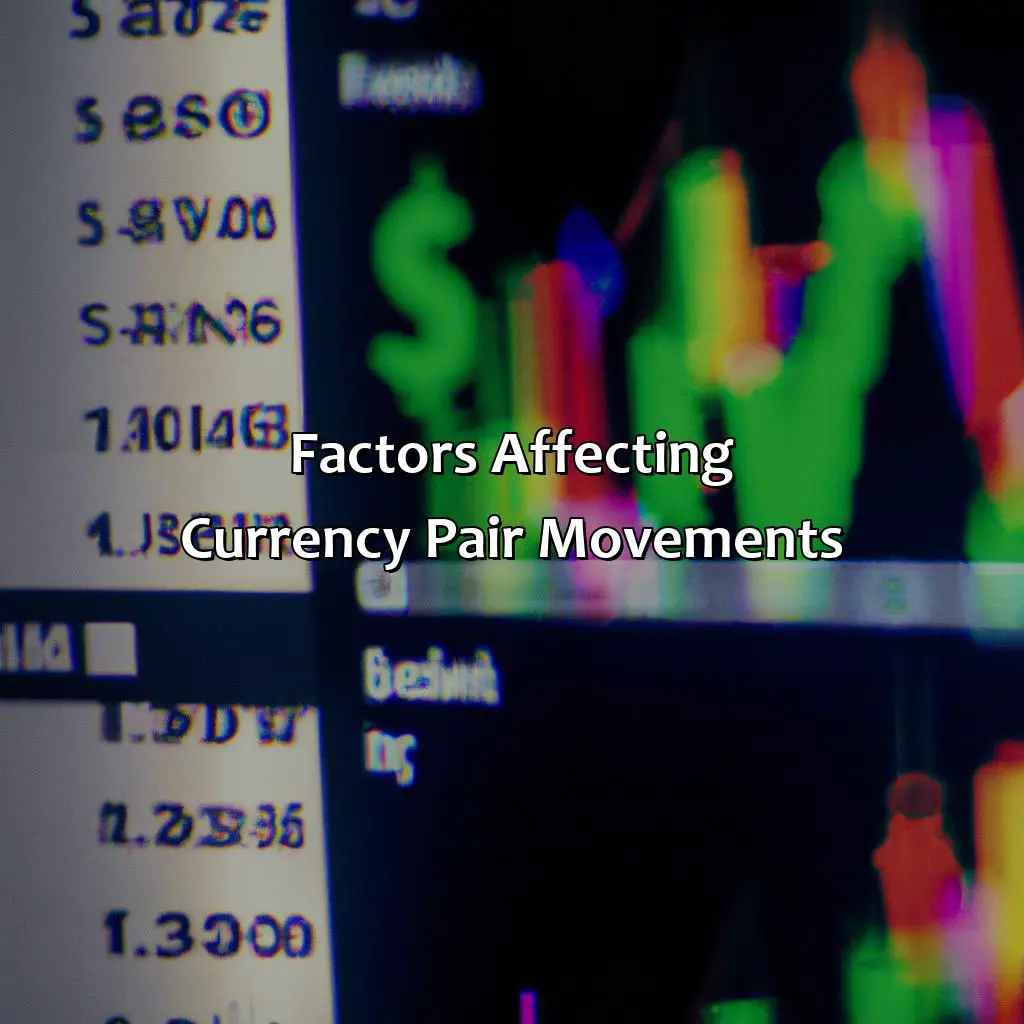
Photo Credits: forexbrokerreport.com by Jeffrey Wilson
To get a handle on the things that impact currency pair movements, especially those that shift 100 pips daily, you must know the various components that influence the market. Economic indicators, geopolitical functions, and central bank policies are major elements to observe for successful trading. In this part, we’ll explore how economic indicators, geopolitical functions, and central bank policies influence currency pair movements. Additionally, traders can use this info for fundamental analysis and trading plans.
Economic Indicators
Economic indicators are crucial for fundamental analysis in currency trading. They provide valuable insights into the overall health of a country’s economy and their potential impact on currency pairs. Here is an overview of some key economic indicators and how they affect different currency pairs:
| Economic Indicators | Description |
|---|---|
| Gross Domestic Product (GDP) | Measures the total value of goods and services produced within a country’s borders |
| Inflation Rate | Measures the rate at which prices for goods and services increase over time, indicating the overall purchasing power of a currency |
| Interest Rates | The cost of borrowing money or the return on investment |
| Employment Reports | Indicates the strength of a country’s labor market and can impact consumer spending |
The GDP is mostly relevant to major currency pairs like EUR/USD, GBP/USD, USD/JPY, etc. Inflation rates affect all currency pairs, where high inflation usually leads to currency depreciation. Interest rates have an essential role in determining cross-currency pairs’ movements such as EUR/JPY or AUD/JPY. Finally, employment reports can also influence all currency pairs as they indicate changes in macroeconomic stability.
It is important to note that various economic indicators can significantly impact different currencies in varying ways due to each currency’s unique characteristics. Furthermore, traders need to stay up-to-date with any news regarding these indicators in order to be informed about sudden market movements.
In history, fundamental analysis has been widely used by many traders since it offers long-term trading strategies allowing them to rely on economic data rather than short-term fluctuations in exchange rates.
Geopolitical events can have a big impact on currency pairs, so incorporating fundamental analysis into your trading strategy is key.
Geopolitical Events
Geopolitical factors can have a significant impact on currency pairs, affecting their prices and volatility. These factors include:
- Political tensions between countries
- Economic sanctions imposed by one country on another
- Natural disasters
- Acts of terrorism
Geopolitical events can lead to sudden movements in the Forex market, making it important for traders to keep a close eye on global developments when analyzing currency pairs. By incorporating fundamental analysis with geopolitical information, traders can identify potential trading opportunities in high volatility currency pairs. Successful trading strategies involve taking into account past and current geopolitical events when making trading decisions based on these currency pairs.
Stay ahead of the game by keeping up with central bank policies – a crucial aspect in determining currency pair movements and developing effective trading strategies based on fundamental analysis.
Central Bank Policies
Central bank policies play a crucial role in influencing the movements of currency pairs. The monetary policies set by central banks impact interest rates and inflation levels, which ultimately affect the value of their respective currencies.
Traders must keep an eye on these policies as they provide critical clues about future market trends, making it easier to predict changes in currency values. Fundamental analysis is an effective approach to monitoring relevant economic data that can help traders make informed decisions based on central bank policies.
Currency pairs can be traded effectively based on fundamental analysis derived from central bank policies. By assessing the state of the economy and predicting likely outcomes, traders can develop trading strategies accordingly, such as scalping, swing trading, or breakout trading, all of which allow them to capitalize on opportunities created by central banks.
It is worth noting that each country has its unique banking system and governing bodies that determine its economic policies. As such, traders should evaluate each currency pair individually based on the specific central bank policies and economic indicators relevant to it.
A true history about central bank policies illustrates their importance in trading currency pairs. In early 2015, the Swiss National Bank unexpectedly removed its cap against the euro exchange rate leading to a significant upward shift in franc’s strength compared to many other currencies worldwide within minutes of this announcement causing widespread damage in global financial markets. This event highlights how severely a change in policy direction from central banks could impact currency markets and traders alike even with due consideration in decision making processes.
Navigate the stormy waters of high volatility currency pairs with effective trading strategies and risk management techniques based on technical analysis.
Trading Strategies for High Volatility Currency Pairs

Photo Credits: forexbrokerreport.com by Bryan Hall
Trade high volatility currency pairs successfully? Yes, you can! You need effective strategies for this. These strategies should include risk management, technical analysis, and market trends. To succeed, use trading approaches that match your style. Day trading, swing trading, breakout trading, and trend trading are four sub-sections to master the high volatility market. Learn them and be successful!
Day Trading
Professionally, an effective trading strategy for high volatility currency pairs is day trading. This involves opening and closing trades within a single trading day to profit from the significant fluctuations in prices. By utilizing technical analysis, traders can identify short-term trends and act quickly with minimal risks.
To practice day trading, it is essential to have adequate risk management strategies in place. This includes setting stop-loss orders and limiting leverage to avoid margin calls. Furthermore, traders should maintain emotional control and not make impulsive decisions based on fear or greed.
Incorporating specific technical indicators, such as moving averages and stochastic oscillators, can enhance day trading effectiveness. These tools help analyze price action objectively and identify potential trade opportunities.
Overall, day trading in high volatility currency pairs requires discipline, patience, and strategic planning. Incorporating technical analysis and risk management principles into your approach can improve your chances of successfully profiting from these market movements.
Swing trading high volatility currency pairs requires a delicate balance of technical analysis and risk management.
Swing Trading
Swing trading involves holding positions for a few days to capture price swings in high volatility currency pairs. It requires technical analysis to identify entry and exit points and risk management to minimize losses. Adequate knowledge of market trends and dynamics is necessary to succeed in swing trading high volatility currency pairs effectively.
One key strategy in swing trading is identifying price patterns that suggest an impending reversal direction. These patterns may include head and shoulders, double tops, and bottoms, etc. Once the pattern has been identified, traders usually wait for the confirmation signal before entering or exiting a position.
Pro Tip: Swing traders must be patient and wait for their setups to manifest before making any moves. Rushing in blindly can lead to significant losses, even when trading high volatility currency pairs.
Breakout trading: Profiting from currency pairs with high volatility through technical analysis and risk management.
Breakout Trading
Breakout trading is a popular strategy used in high volatility currency pairs. It involves identifying key price levels and anticipating a potential breakout, either above resistance or below support. Traders often use technical analysis tools to determine these levels, such as trend lines, moving averages and chart patterns.
Breakouts can occur after periods of consolidation and are often accompanied by increased trading volume. Risk management is crucial when using this strategy, as false breakouts can result in losses if adequate stop-loss orders are not in place.
In line with the theme of high volatility, breakout trading offers higher potential rewards but also comes with higher risk. To increase the likelihood of success, traders should remain patient and avoid entering trades too early or too late. A good understanding of market dynamics and being able to identify false breakouts through analysis will also be helpful for implementing this strategy effectively.
Notably, breakout trading can be compared to a game of chess where the aim is to position oneself advantageously before executing an attack. With proper planning and execution of strategies, it is possible to achieve significant gains from breakout trading despite the inherent risks involved.
For instance, Jane noticed a bullish breakout forming on USD/JPY after identifying multiple resistance points previously established on charts coupled with solid support zones that indicated a possible upward movement beyond 100 pips per day. So Jane made her moves based on technical analysis observations to take advantage of the potential profits which turned out successful for her trade achieving more than 200 pips profit just like that!
Trade with the trend, not against it, when tackling high volatility pairs through trend trading, using technical analysis and sound risk management techniques.
Trend Trading
Analyzing market trends to make decisions on buying or selling stocks is called trend trading. High volatility currency pairs are often used in trend trading due to their large price swings, making them ideal for seeking profit in a short period. Investors use technical analysis tools to identify trends and patterns, and risk management techniques to minimize the losses that come with such high volatility. Proper technical indicators such as moving averages and relative strength index (RSI) can help traders accurately predict the direction of the trend and the ideal entry and exit points.
Trading high volatility currency pairs requires more than just risk management, you also need to master emotional control to avoid margin calls.
Risks and Pitfalls of Trading High Volatility Currency Pairs
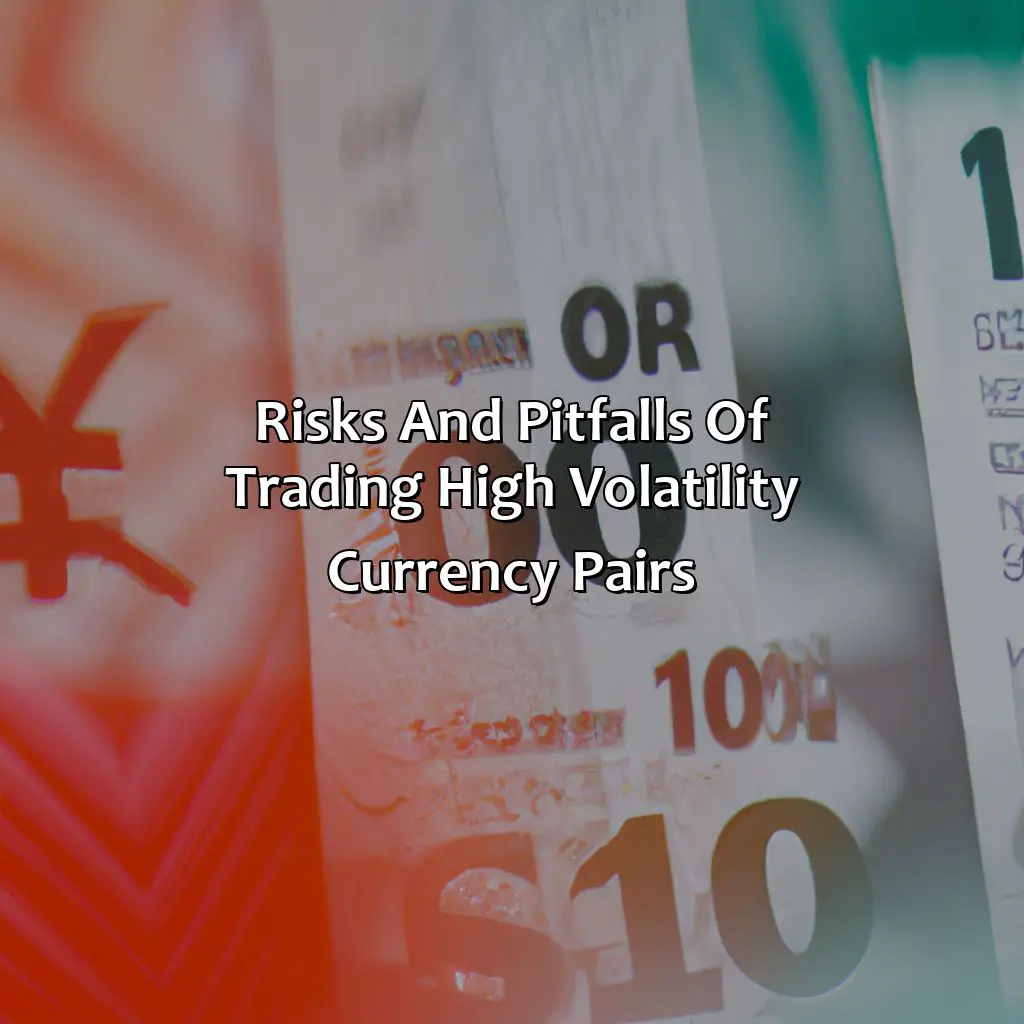
Photo Credits: forexbrokerreport.com by Raymond Garcia
To conquer the hazards of trading high volatility currency pairs, you must comprehend market volatility and put into practice efficient risk management tactics. Margin calls are regular and maintaining control of your feelings is important to success. In this section on high volatility trading, we’ll examine these subsections as indispensable answers for sailing the emotional peaks and troughs of the market while protecting your capital.
Market Volatility
The volatility of the market can be unpredictable and can have a substantial impact on currency pair movements. Fluctuations in the value of a currency can cause significant price swings, making trading in volatile markets risky. Extreme market volatility during certain events can cause sudden spikes in prices, affecting the liquidity of pairs and increasing the risk of slippage.
It is essential to manage risk when trading in such high-volatile markets. Traders should use stop-loss orders and take-profit orders to limit potential losses and ensure gains are locked-in during acceptable levels for profit-taking. One may also consider using automated trading systems, which reduce trading risks by taking decisions based on pre-defined strategies.
Furthermore, staying up-to-date with economic and geopolitical news is critical when trading volatile markets. Higher volatility significantly increases the chances of gaps in price charts, which could lead to unexpected losses or margin calls if not monitored closely.
In addition to this, traders should be cautious about emotional discipline when dealing with market instability as impulsiveness could negatively impact their trades. Therefore, limiting opening positions while minimizing leverage through proper risk management techniques can help traders stay composed while maximizing profits despite high volatilities in the marketplace.
Overall, understanding how to deal with market volatility is an essential skill for any trader looking to achieve long-term success. It requires a combination of patience, knowledge-based strategies and proper risk management techniques that encourage emotionless decision-making by minimizing downside risks at all times.
Stay on top of your risk management game to avoid the dreaded margin calls when trading high volatility currency pairs.
Margin Calls
Excessive trading on high volatility currency pairs can result in margin calls, leading to a loss of investment and potential long term consequences. Managing the risk is essential to avoid such events. One can control the exposure by keeping a check on stop-loss orders, leverage ratio, and available margin account balance.
In the world of forex trading, margin calls are one of the risks that traders face when dealing with highly volatile currency pairs. By definition, these calls require traders to deposit additional funds when their accounts fall below the required level. Margin call notifications come with a warning that the trade is close to liquidation or being stopped out.
Effective risk management through well-planned strategies can prevent associated difficulties such as these margin calls. A focused approach to investing in low spread currency pairs and strict adherence to guidelines involving maximum daily losses will only help with managing capital more effectively.
It is reported that big names like Warren Buffett and Charlie Munger are notorious for cutting their losses and advocates realistic limitations concerning expected returns along with securing capital from unnerving scenarios like this when trading currency volatility.
Emotional Control
Managing trading psychology and emotional control is crucial for risk management when dealing with high volatility currency pairs. Traders must avoid making rash decisions based on emotions and remain level-headed during both losses and gains. A solid trading plan with predetermined entry/exit points, strict stop-loss orders, and disciplined adherence is essential. Additionally, keeping a trading journal can help monitor the emotional state and identify patterns to keep emotions under control in future trades.
Moreover, traders who lack emotional control may resort to revenge trading or overtrading, leading to significant losses. Therefore, practicing mindfulness techniques such as meditation and yoga can help maintain balance and prevent impulsive trading behavior.
Studies show that 90% of beginner traders lose money due to poor risk management caused by emotions like fear and greed (source: Financial Times). To improve trading performance, it’s vital to prioritize emotional stability through proper risk management measures that allow traders to operate independently of their psychological state.
Five Facts About What Pairs Move 100 Pips a Day:
- ✅ The most volatile currency pairs can move more than 100 pips a day on average, such as GBP/JPY and GBP/NZD. (Source: Investopedia)
- ✅ Other pairs that can move over 100 pips a day include AUD/JPY, EUR/JPY, and USD/MXN. (Source: DailyFX)
- ✅ News releases and economic events can increase volatility and cause pairs to move more than 100 pips in a day. (Source: FXCM)
- ✅ Major banks and financial institutions closely monitor high-volatility pairs for trading opportunities. (Source: FXStreet)
- ✅ Traders should exercise caution when trading highly volatile pairs, as they can also experience sharp reversals and significant losses. (Source: BabyPips)
FAQs about What Pairs Move 100 Pips A Day?
1. What pairs move 100 pips a day?
Answer: Currency pairs that are known to move 100 pips or more per day include the GBP/JPY, GBP/USD, USD/JPY, EUR/JPY, and EUR/USD.
2. How do economic events and market sentiment impact these currency pairs?
Answer: Economic events such as central bank meetings, GDP releases, and employment reports can impact these currency pairs by influencing market sentiment and trader expectations.
3. Which majors are the most influenced by the world’s largest economies?
Answer: The majors that are most influenced by the world’s largest economies include the USD/JPY (Bank of Japan), EUR/USD (European Union), and GBP/USD (Bank of England).
4. How does forex market volume affect these currency pairs?
Answer: Forex market volume can impact these currency pairs by influencing price movements and trading opportunities. Higher trading volume can lead to increased volatility and greater trading opportunities.
5. How have recent events such as US-China trade relations and Brexit negotiations impacted these currency pairs?
Answer: Events such as US-China trade relations and Brexit negotiations can impact these currency pairs by affecting market sentiment and trader expectations, leading to increased volatility and potential trading opportunities.
6. How does the price of oil affect these currency pairs?
Answer: The price of oil can impact these currency pairs by influencing the economies of oil-producing countries, such as Canada and Russia, and affecting the demand for their respective currencies. This can lead to increased volatility and potential trading opportunities.


